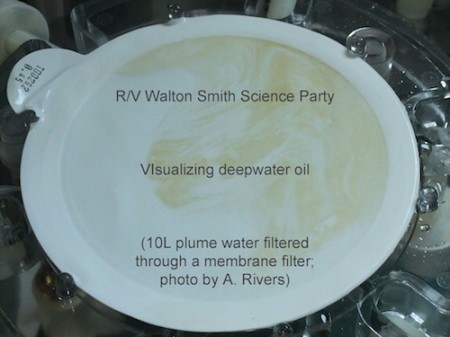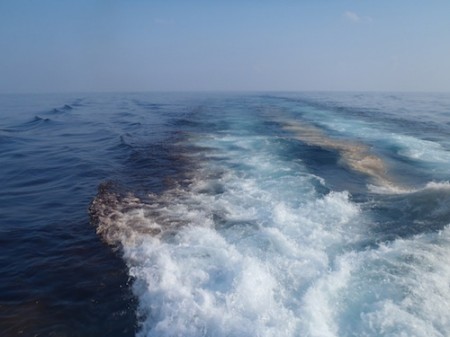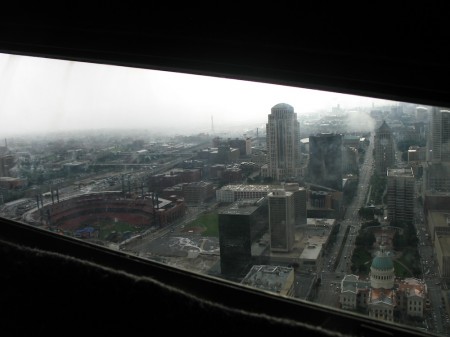The St. Louis Federal Reserve Bank has started a video competition for college students to present economic information. The first competition was to explain opportunity costs.
Month: June 2010
Scientists tracking oil plumes

As oil continues to leak from the damaged well in the Gulf of Mexico and the surface slick is affecting more and more of the coastline, scientists now using research vessels to track the underwater plumes spreading at depth throughout the gulf.

Satellite imagery from NASA only shows what’s at the surface. To find the underwater plumes, researchers on boats lower instruments on cables that measure the chemistry of the water. Certain chemicals, like colored dissolved organic matter (CDOM) are produced when there is a lot of oil in the water.
Dr. Samantha Joye, from the University of Georgia, is the lead scientist on one such vessel. She started the Gulf Oil Blog where she describes her ongoing work in the gulf and answers readers questions. It is an excellent resource. A great demonstration of science in action, working on a practical problem but using techniques and methods developed over time for answering more abstract questions.

St. Louis overview
I had not particularly wanted to go up into the St. Louis Arch myself, but the students really wanted to and we had a little time to spare after the Science Museum. So I grabbed tickets for the last tram to the top, and I’m glad I did. Looking down on the city and river from above you could, in an almost tactile way, reconcile the geographic elements with the history that we’d talked so much about at Anheuser-Busch.

Standing in line, waiting for the tram to the top, we were treated to a short documentary on the Eads Bridge, the first across the Mississippi in St. Louis. The video stressed the importance of the bridge in allowing the city to become the gateway for westward expansion.
The tram arrived and small rectangular doors opened up to reveal tiny escape pods fit for a spaceship. Five of us squeezed in, fortunately we were all friendly. The distinct possibility of claustrophobia tinged the air. Three minutes 47 seconds later we reached the top. Forty-five degree rain was pouring down outside. The wind was so strong you could, if you held still and waited for it, feel a slight sway in the Arch itself.


Looking east we saw the mighty Mississippi. Not quite so mighty as it is in Memphis, which is downstream of the confluence with the Ohio River, but enormous nonetheless. On the river, huge barges carried freight cars with unknown cargo south toward New Orleans. Just below, an helicopter sat on an helipad barge waiting for an emergency call. Directly across the water, on the east bank, enormous silos with their own docks waited to load barges with grain collected from across the mid-west.
It was still pouring when we left the Arch, and the rain continued on even during dinner. But leaving the restaurant, heading back to the hotel, the setting sun to the west, refracted through raindrops over the river, created one of nature’s own ephemeral monuments. A poignant reminder that forty-five, or even one hundred and forty-five years are but a moment in the deep span of geologic time.
Gardening in small spaces – self-watering containers
The above video, on how to build a self-watering container (this type is also known as a Global Buckets), seems extremely useful for the urban gardener, especially in Memphis where even gardening in the ground is difficult because of the poor, loessic soil. I’ve found container gardening (in cat litter buckets) to be much more effective, even though evaporation is a major issue with our hot summers. So I very much like the idea of self-watering containers.
These containers may also be an excellent complement to our greenhouse, because we can avoid having to water every day. If we got the right containers, or decorated them nicely enough, we might be able to sell these with our vegetables at the end-of-year plant sale.
The related videos on YouTube have a variety of other self-watering container variants. This version, with water jugs and a single large tub, also seems like it might be effective. There are also nice instructional video on how siphons work, as an easier way of watering a series of buckets. The Global Buckets project is a fascinating effort to help reduce malnutrition with simple materials.


